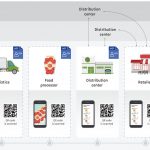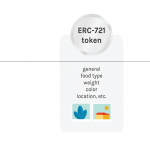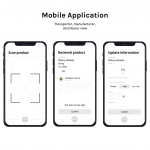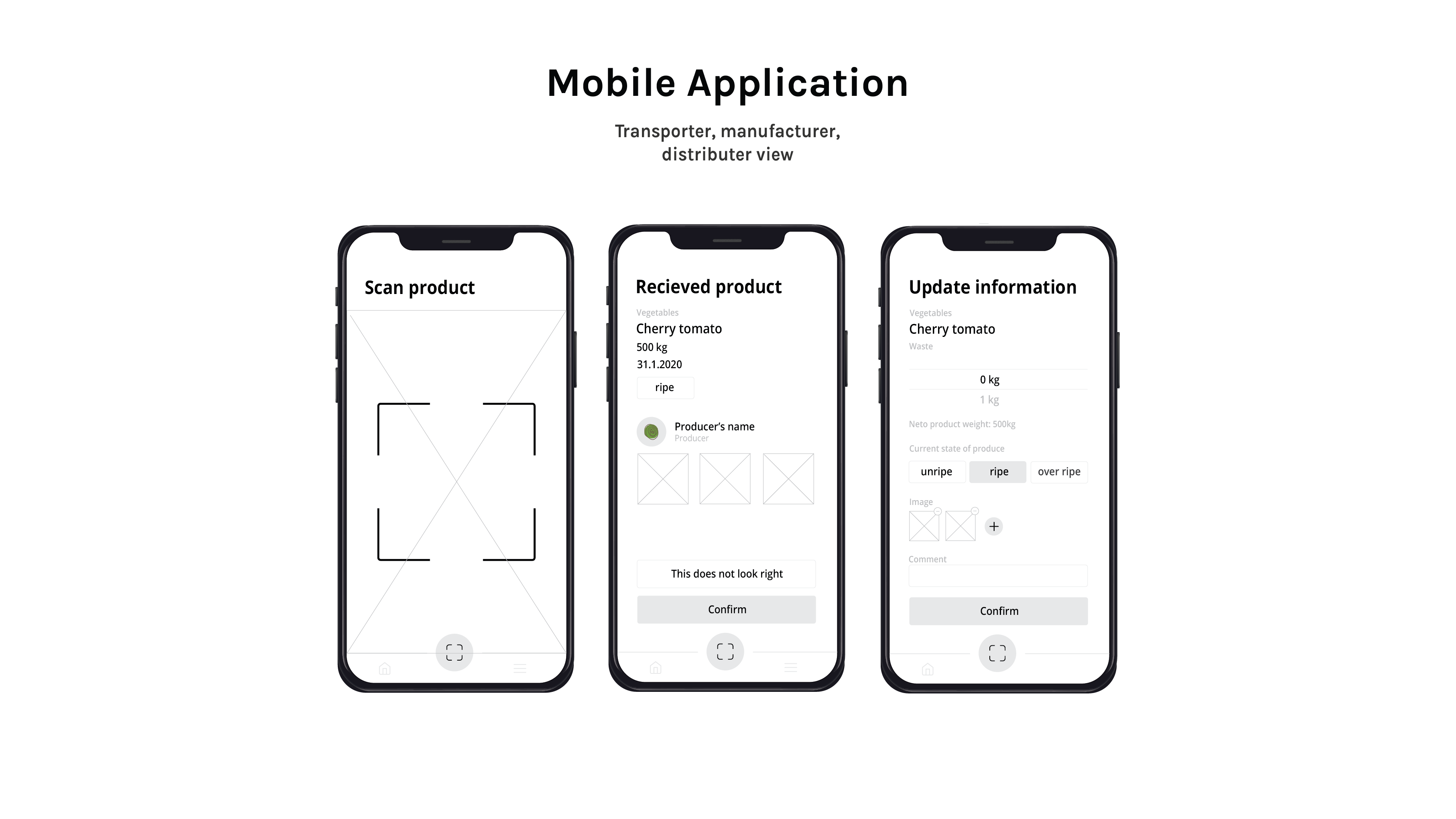-
A short food supply chain connects local farmers with local customers. However, beside the agriculture domain, this process also includes logistics, trading and dissemination. Even though the process is more individual and natural, it still needs more improvement in order to facilitate its acceptance from the broader local communities. Furthermore, even though interesting, the potential customers sometimes also lack the trust into such food, which in many cases is more expensive, while giving no real proof of its origin. To improve the process in terms of efficiency, traceability and trust, a digital transformation of the process, backed by blockchain technology is the best possible solution.
- Slovenia
- Pomurje
- #supplychain, #blockchain, #digitaltransformation
- Yes
-

- Local Region
- July 2020 - ongoing
-
The GP is currently in the piloting process.
-
The good practice focuses on the challenge of a digital transformation for short food supply chains (SFSC). Within the Test Area Pomurje - Slovenia, a local SFSC called Green point (Zelena točka) is like other short food supply chains based on (1) helping farmers to produce local products, (2) connecting them into a cooperative, (3) collecting their local products, and (4) distributing and selling products through Green point Trans to the customer. Although such SFSC are in nature local, individual, hand-based etc., they still need a lot of improvement in order to make them more accessible, user friendly and trusted by the end-customers. To achieve such improvement, a digital transformation, backed by innovative blockchain technology was foreseen. By exploiting the features of blockchain technology like decentralization, immutability, transparency etc., the SFSC can specifically address challenges, such as traceability, thus also food origin and fraud prevention. With the help of the Regional Stakeholder Group focused around the Digital Innovation Hub AGRIFOOD (DIH AGRIFOOD), the Blockchain-based digital transformation of the SFSC Green point was designed and developed and is currently in the process of piloting. It is based on a smart contract public permissioned blockchain ledger, distributed among all the important RSG stakeholders. Furthermore, all the stakeholders of the SFSC are using dedicated Web applications, which enable every single stakeholder (e.g. farmer, transporter, logistics center) to add, store and confirm their activity within the supply chain. Each next actor in the supply chain, using the dedicated app confirms the activity of the previous one. All the confirmations and relevant data are stored on the blockchain ledger, which at the end enables to distribution center to collect/join all the relevant supply chain information of a sold product and put it the form of QR code on the invoice. The end-customer can later on scan the QR code on his invoice and all the relevant supply chain information in a user-friendly manner will be displayed to him, thus ensuring to him the traceability and the origin of the locally produced food.
- https://itc-cluster.com/
-
Any community supported by local farmers, willing to participate in a short food supply chain process.
-

-

-
In order to facilitate such a process, the community could either join the existing blockchain ledger of SFS Green point and reuse the dedicated application or in contrary set up its own blockchain ledger among its stakeholders and develop their own dedicate apps to support the process if their is specific. In order to make the process automatic, the end seller (end point of the supply chain) needs to be able to print dedicated QR codes on the invoice or somehow other than that present such a QR code to the customers. In order to generate the correct QR code it also needs to be able to connect and use dedicated APIs, which joins/collects all the relevant information from the blockchain ledger. The supply chain stakeholders need to be willing to use the dedicated applications for confirming their supply chain activities.
-
A key condition for setting up a digitally supported short supply chain is a supportive technical community (in the case of Green point it was the DIH AGRIFOOD), which manages all the key aspects of the digital transformation and helps educate and facilitate all the involved stakeholders (e.g. farmers, transporters etc.). Furthermore, all the involved stakeholders will need to be willing to change their daily routines and activities, since all of them will need to use digital supporting tools.
-
The key steps for setting up a blockchain-based short food supply chains are: 1) defining all the stakeholders, 2) finding support and help from technical ICT professional partners, 3) defining the new supply chain process with the idea of establishing the link between the real-life activities and its digital trail, 4) connect to existing blockchain ledgers and ICT tools or setting your own, 5) educating on the usage of ICT tools, 6) prototyping the process, 7) learning from possible mistakes and adjusting, and lastly 8) educating and promoting the customers.
-
The difficulties in the process of establishing a digitally supported short supply chain is surely the setting up a link between the real-life activities in the short food supply chain with the digital trail it needs to leave. Once having all the relevant data, it is easy to analyze it, display it etc. However, to bring it to such point where it can be used and linked together is the biggest challenge. The biggest difficulty was to ensure a digital link between a customers bought bag of various locally harvested vegetables and their origin. Without important changes in the process of the supply chain, specifically at the end point of it, such s solution would not be possible, i.e., the Green point had to change their invoicing, include additional logistic steps into their processes (printing sticky notes with LOT numbers every time it accepted food etc.
- Tomaž Bokan
- ITC Cluster
- tomaz.bokan@itc-cluster.com
Blockchain-based digital transformation of a short food supply chain

The good practice focuses on the challenge of a digital transformation for short food supply chains (SFSC). Within the Test Area Pomurje - Slovenia, a local SFSC called Green point (Zelena točka) is like other short food supply chains based on (1) helping farmers to produce local products, (2) connecting them into a cooperative, (3) collecting their local products, and (4) distributing and selling products through Green point Trans to the customer. Although such SFSC are in nature local, individual, hand-based etc., they still need a lot of improvement in order to make them more accessible, user friendly and trusted by the end-customers. To achieve such improvement, a digital transformation, backed by innovative blockchain technology was foreseen. By exploiting the features of blockchain technology like decentralization, immutability, transparency etc., the SFSC can specifically address challenges, such as traceability, thus also food origin and fraud prevention. With the help of the Regional Stakeholder Group focused around the Digital Innovation Hub AGRIFOOD (DIH AGRIFOOD), the Blockchain-based digital transformation of the SFSC Green point was designed and developed and is currently in the process of piloting. It is based on a smart contract public permissioned blockchain ledger, distributed among all the important RSG stakeholders. Furthermore, all the stakeholders of the SFSC are using dedicated Web applications, which enable every single stakeholder (e.g. farmer, transporter, logistics center) to add, store and confirm their activity within the supply chain. Each next actor in the supply chain, using the dedicated app confirms the activity of the previous one. All the confirmations and relevant data are stored on the blockchain ledger, which at the end enables to distribution center to collect/join all the relevant supply chain information of a sold product and put it the form of QR code on the invoice. The end-customer can later on scan the QR code on his invoice and all the relevant supply chain information in a user-friendly manner will be displayed to him, thus ensuring to him the traceability and the origin of the locally produced food.


 Applicable in rural, non city areas
Applicable in rural, non city areas
 Local area
Local area Youth, Elderly, Students, Active working people
Youth, Elderly, Students, Active working people July 2020 - ongoing
July 2020 - ongoing
Implementation
Key conditions for success
A key condition for setting up a digitally supported short supply chain is a supportive technical community (in the case of Green point it was the DIH AGRIFOOD), which manages all the key aspects of the digital transformation and helps educate and facilitate all the involved stakeholders (e.g. farmers, transporters etc.). Furthermore, all the involved stakeholders will need to be willing to change their daily routines and activities, since all of them will need to use digital supporting tools.
Key steps for activity implementation
The key steps for setting up a blockchain-based short food supply chains are: 1) defining all the stakeholders, 2) finding support and help from technical ICT professional partners, 3) defining the new supply chain process with the idea of establishing the link between the real-life activities and its digital trail, 4) connect to existing blockchain ledgers and ICT tools or setting your own, 5) educating on the usage of ICT tools, 6) prototyping the process, 7) learning from possible mistakes and adjusting, and lastly 8) educating and promoting the customers.
Dificulties encountered
The difficulties in the process of establishing a digitally supported short supply chain is surely the setting up a link between the real-life activities in the short food supply chain with the digital trail it needs to leave. Once having all the relevant data, it is easy to analyze it, display it etc. However, to bring it to such point where it can be used and linked together is the biggest challenge. The biggest difficulty was to ensure a digital link between a customers bought bag of various locally harvested vegetables and their origin. Without important changes in the process of the supply chain, specifically at the end point of it, such s solution would not be possible, i.e., the Green point had to change their invoicing, include additional logistic steps into their processes (printing sticky notes with LOT numbers every time it accepted food etc.
Additional information
https://itc-cluster.com/
Resources needed
In order to facilitate such a process, the community could either join the existing blockchain ledger of SFS Green point and reuse the dedicated application or in contrary set up its own blockchain ledger among its stakeholders and develop their own dedicate apps to support the process if their is specific. In order to make the process automatic, the end seller (end point of the supply chain) needs to be able to print dedicated QR codes on the invoice or somehow other than that present such a QR code to the customers. In order to generate the correct QR code it also needs to be able to connect and use dedicated APIs, which joins/collects all the relevant information from the blockchain ledger. The supply chain stakeholders need to be willing to use the dedicated applications for confirming their supply chain activities.
Would you like to know more?
Visit the website of the project for more details or contact the author
ITC Cluster
Tomaž Bokan
tomaz.bokan@itc-cluster.com
